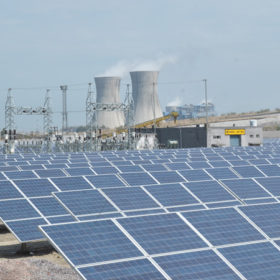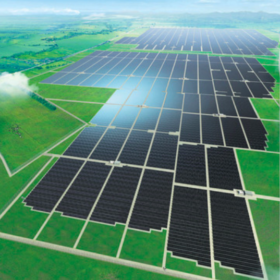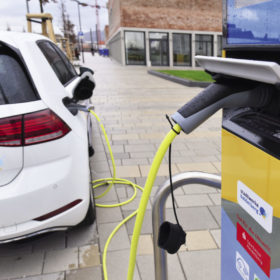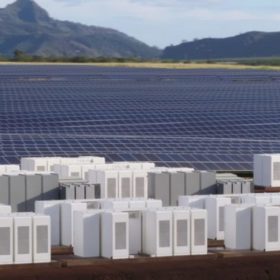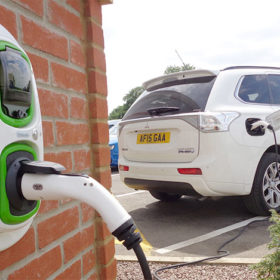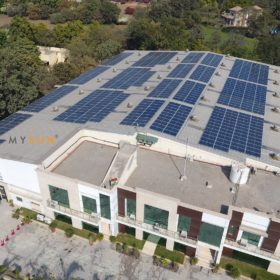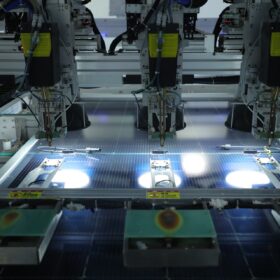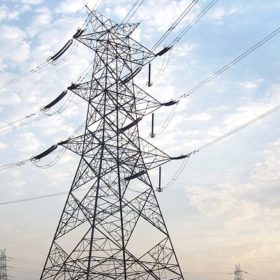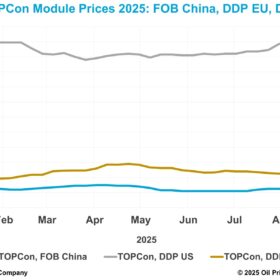Car industry copper demand to surge 250% due to EVs
By considering use of the metal in charging infrastructure, analyst Wood Mackenzie has found higher demand from the mobility sector than is the case if only the volume of the material required for vehicle construction is examined.
India’s renewable power generation cost the lowest in Asia Pacific
The cost of solar power generation in India has fallen to half the level seen in many other markets in the region due to extensive solar resource, market scale and competition.
Global PV market: 114 GW to be installed in 2019, with continued growth onwards
According to the latest market forecast published by Wood Mackenzie, it seems that global PV installation figures will rise to 125 GW per year from 2020. Continued global capacity expansion will come in through a growing gigawatts-club.
Electrifying the current taxi fleet would help India cut emissions faster: Wood Mackenzie
Though electric vehicles are up to 67% less emissions intensive than gasoline cars, their competitiveness depends on many factors like the source of electricity used for vehicle and battery manufacturing and charging. Given that India still has a high share of coal or other fossil fuels in its power mix, electrifying the current car taxi fleet would help it cut emissions faster than incentivising the use of privately owned EVs because of the taxis’ greater utilisation in terms of miles travelled.
PV+storage opportunity looms in Asia-Pacific region: WoodMac
Solar-plus-storage could be competitive against gas peaking power plants in Australia within the next five years, as the average solar-plus-storage LCOE across the Asia-Pacific region is set to fall from $133/MWh this year to $101/MWh by 2023, according to a newly released research report.
The long read: A burning issue
Deployment of lithium-ion battery storage systems is growing rapidly, with Wood Mackenzie recently predicting that the U.S. market alone could be worth $4.7 billion within the next five years. Demand is rising for both grid-scale and behind-the-meter applications in a number of markets throughout the world, particularly in East Asia, the global hub of lithium-ion battery production. But a recent string of fires in South Korea – one of the world’s biggest markets for stationary storage, thanks to a concerted government push – has rekindled smoldering concerns about safety.
The prospects for solar after the Assembly elections
Narendra Modi’s BJP party is seeking re-election with the aim of ensuring the electrification of all railways by 2022 and turning renewable energy into a popular movement with steps including an emphasis on solar farming. Even if the elections spring a surprise, however, the renewable momentum is unlikely to slow as no government can afford to roll back the clean power tide.
The long read: A burning issue
Deployment of lithium-ion battery storage systems is growing rapidly, with Wood Mackenzie recently predicting that the U.S. market alone could be worth $4.7 billion within the next five years. Demand is rising for both grid-scale and behind-the-meter applications in a number of markets throughout the world, particularly in East Asia, the global hub of lithium-ion battery production. But a recent string of fires in South Korea – one of the world’s biggest markets for stationary storage, thanks to a concerted government push – has rekindled smoldering concerns about safety.
Electric vehicles off to a good start in 2019
Following Tamil Nadu’s plans to purchase 2000 electric buses, Karnataka aims to convert half the government vehicles in Bengaluru to electric by 2019 end. Further, Delhi has allocated Rs 100 crore to electric vehicles in its budget for 2019-20.
India will miss 100 GW solar target according to Wood Mackenzie
Reports emphasize the likelihood of India remaining a world leader for solar but warn of missed targets for PV overall and rooftop in particular.

